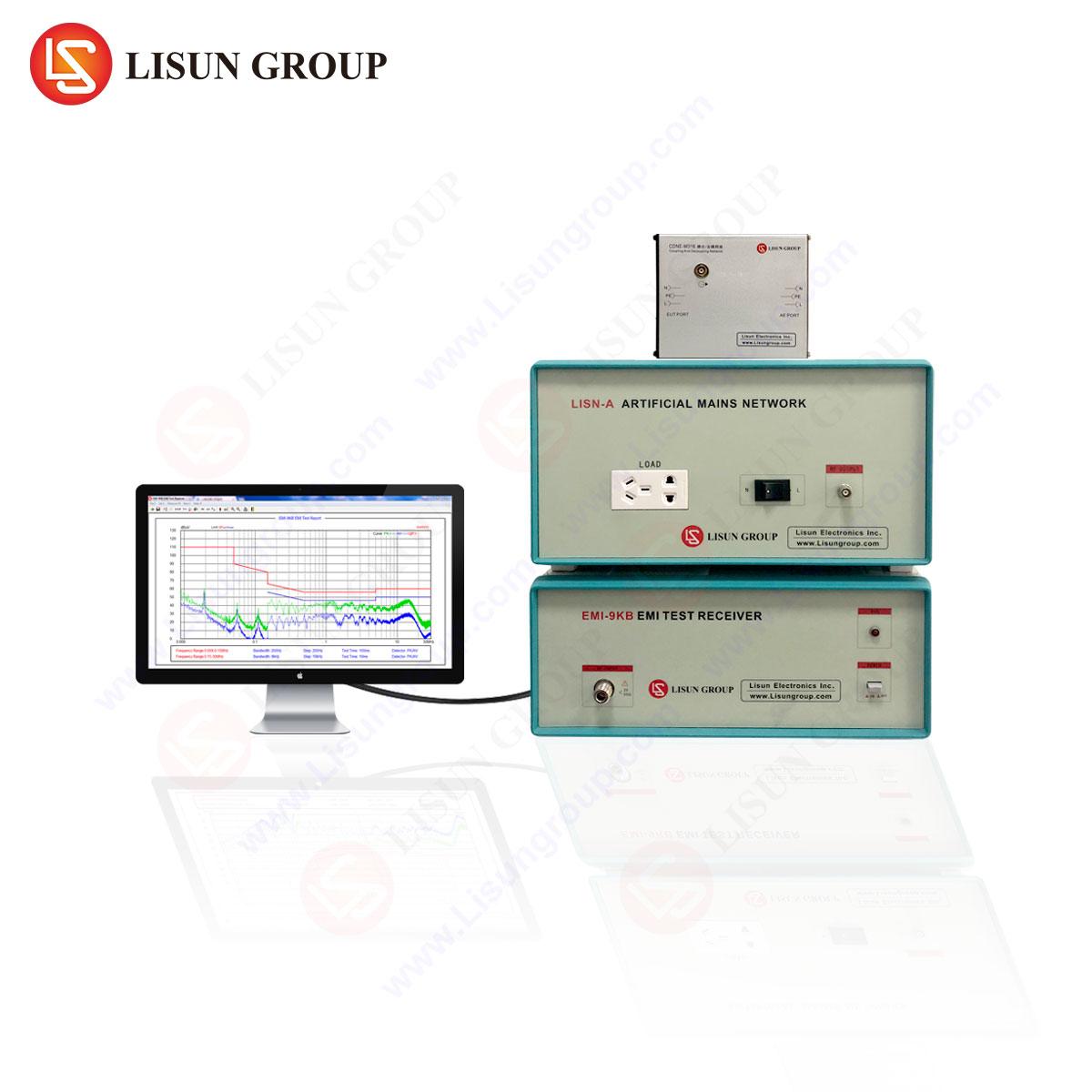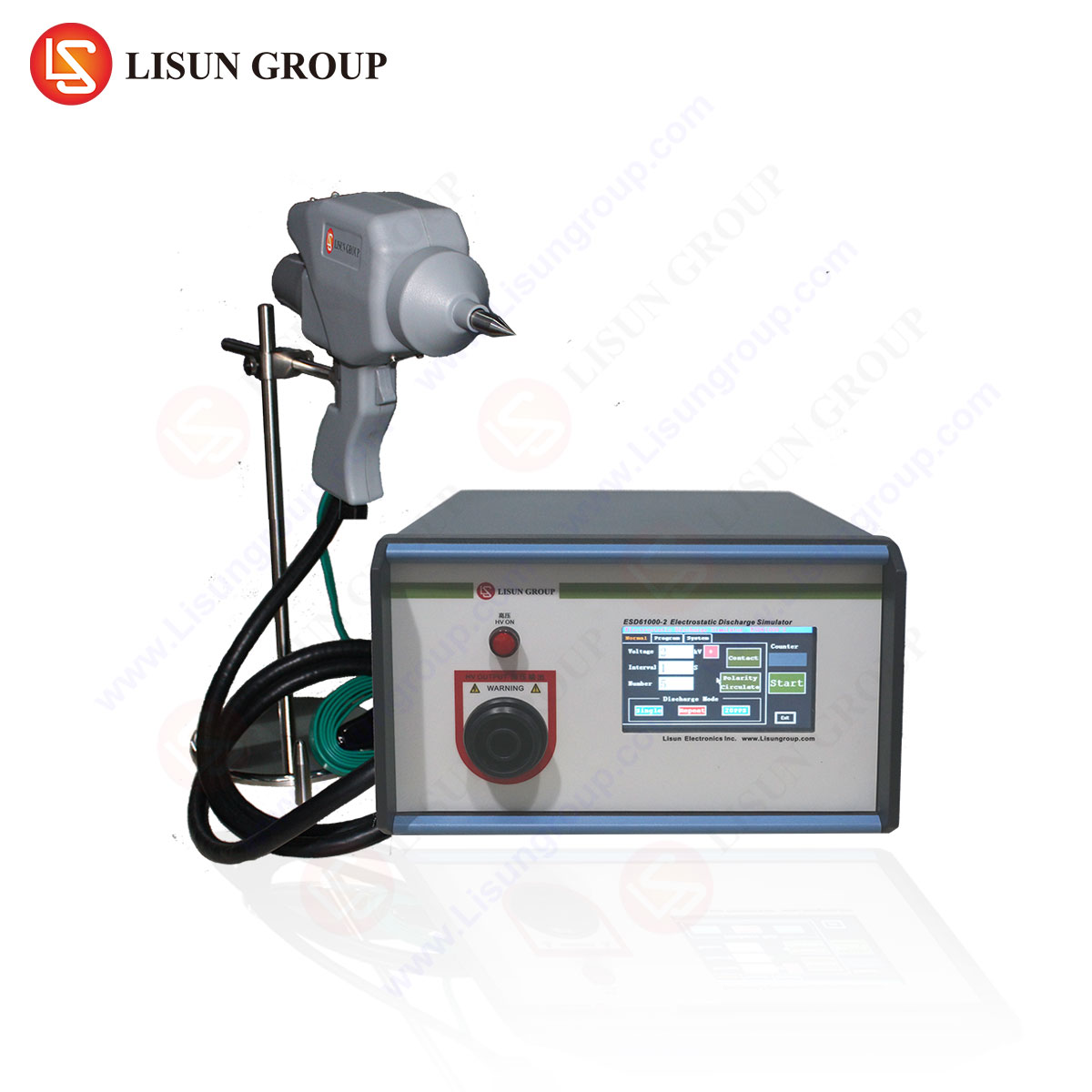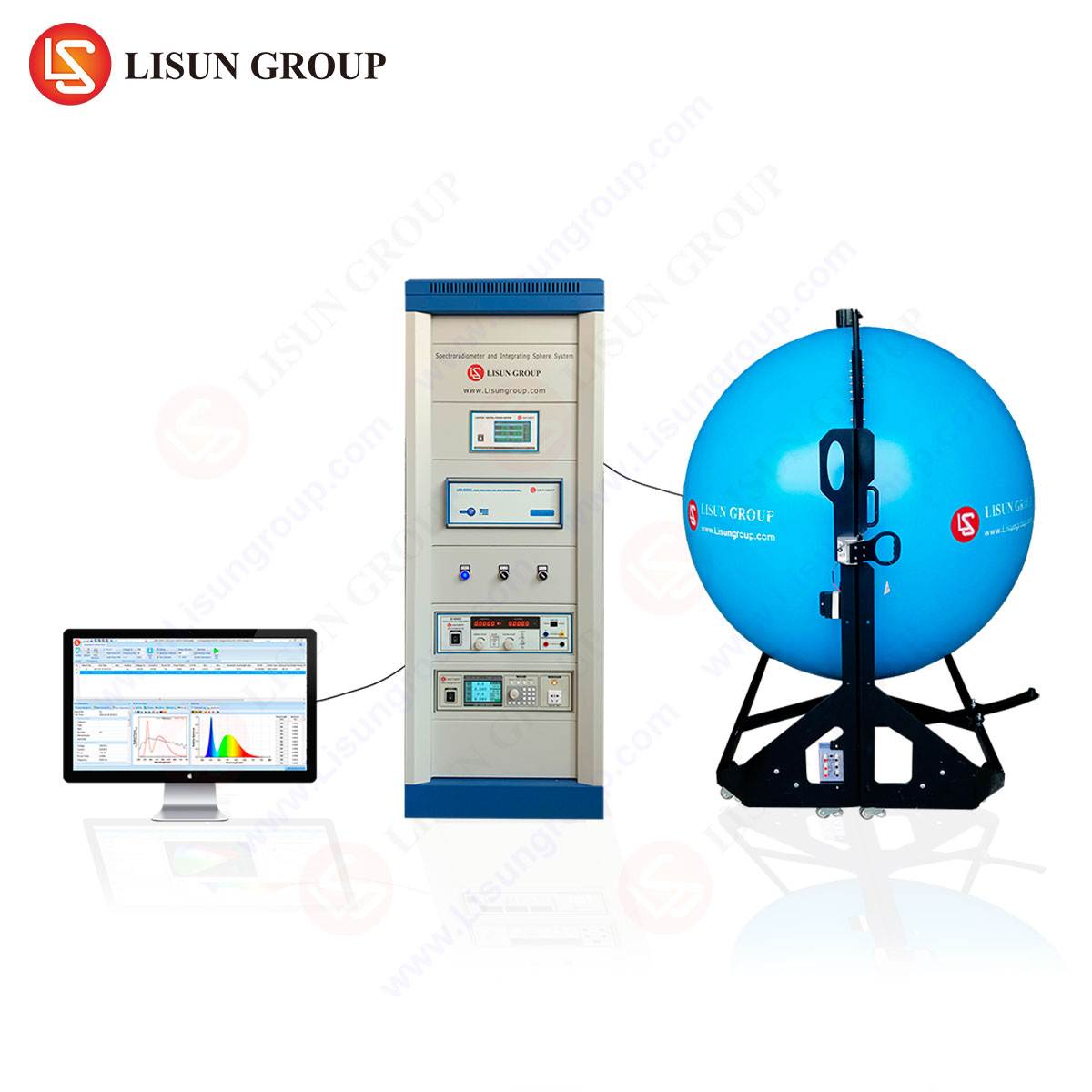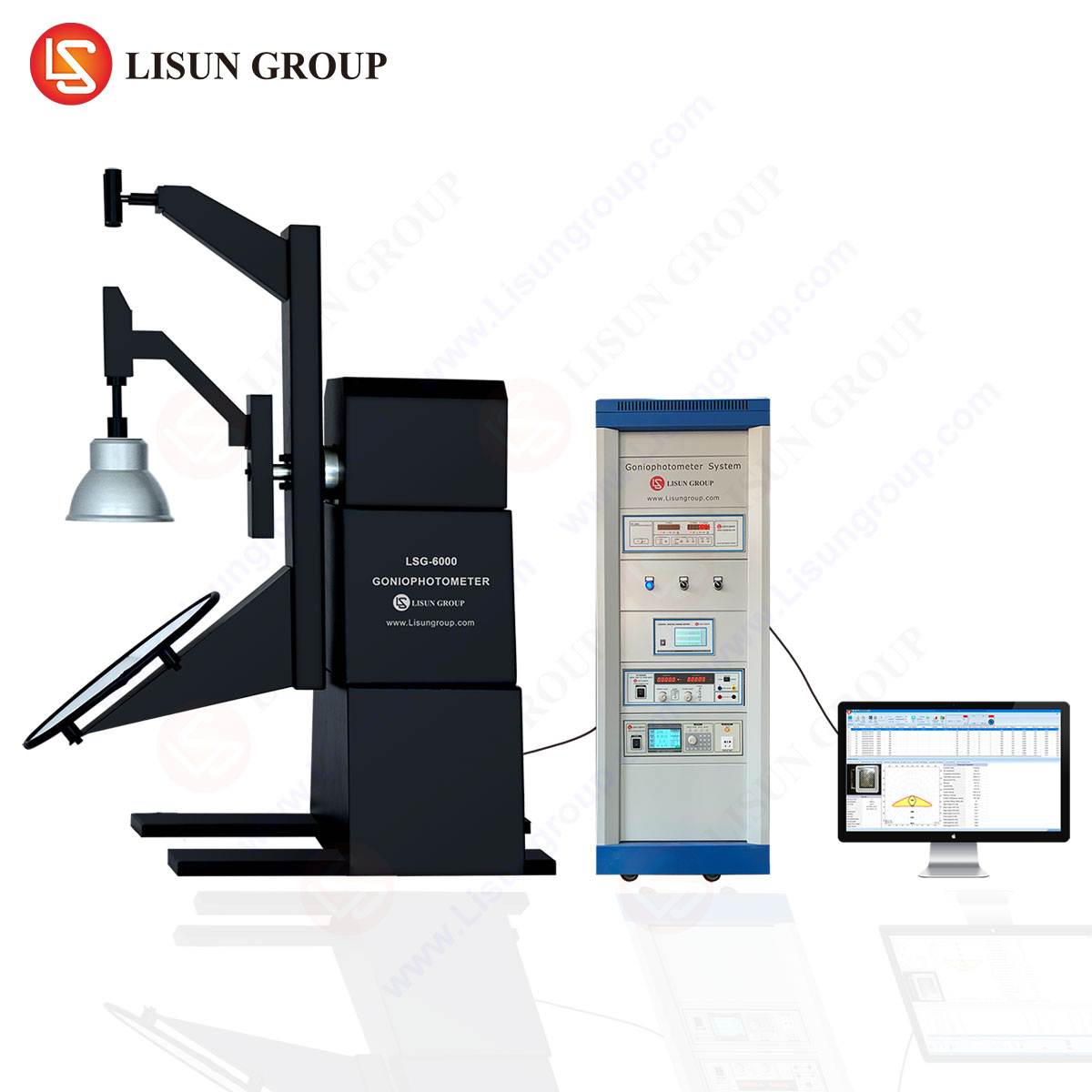Fundamentals of Electrostatic Discharge and the Human Body Model
Electrostatic Discharge (ESD) represents a significant and pervasive threat to the operational integrity and long-term reliability of electronic systems across virtually all modern industries. This transient transfer of electric charge between bodies at different electrostatic potentials can occur through direct contact or via an electrostatic field. The Human Body Model (HBM) was developed to simulate the most common ESD event: the discharge from a human being, who has accumulated static charge through everyday activities such as walking across a carpet, to a sensitive electronic device. HBM testing is therefore not merely a quality assurance step but a fundamental component of a robust product design and validation lifecycle, designed to ensure that components and end-use equipment can withstand the electrostatic environments they will inevitably encounter.
The HBM waveform is specifically defined by international standards, most notably the ANSI/ESDA/JEDEC JS-001 and the IEC 61000-4-2. The model is characterized by a 100-picofarad capacitor discharged through a 1.5-kiloohm resistor, representing the approximate capacitance of the human body and the resistance of a human finger, respectively. This RC network produces a current pulse with a very fast rise time, typically in the range of 2 to 10 nanoseconds, followed by a slower exponential decay with a time constant of approximately 150 nanoseconds. The energy and spectral content of this pulse are capable of inducing catastrophic failures, such as junction burnout and metal melt, as well as latent defects that may degrade performance and lead to premature field failure. Consequently, HBM testing is a mandatory requirement for semiconductor components and is increasingly critical for final assembled products in sectors ranging from automotive to medical devices.
The Critical Role of HBM ESD Testing in Product Qualification
The primary objective of HBM ESD testing is to classify the relative sensitivity of components and products to ESD events, thereby establishing a baseline for their handling and application requirements. This classification is essential for implementing effective Electrostatic Discharge Protected Areas (EPAs) during manufacturing and for informing end-users about the product’s resilience. For instance, a microcontroller used in an automotive engine control unit (ECU) must possess a high HBM classification to survive the harsh electrical environment of a vehicle, whereas a component for a controlled laboratory instrument may have a lower threshold.
The testing process involves applying a series of positive and negative polarity discharges to each pin of a device under test (DUT), with all other pins grounded, and vice versa. The DUT is monitored for parametric or functional failure after each stress level. The results allow manufacturers to bin components into standardized classes. According to JS-001, these classes range from Class 0 (failure at < 250 volts) for highly sensitive devices, to Class 3A (withstand ≥ 16,000 volts) for exceptionally robust ones. This systematic approach provides a common language for suppliers and customers, ensuring that components are appropriately specified for their intended use. Without this standardized testing, the supply chain would be fraught with unpredictable field returns and reliability issues, leading to significant financial losses and potential safety hazards, particularly in critical applications like medical devices or rail transit systems.
Operational Principles of Modern ESD Simulators
An ESD simulator, or ESD gun, is a sophisticated instrument designed to generate highly repeatable and standardized HBM discharges. Its operation is governed by the need to accurately replicate the specified current waveform onto the DUT. The core components of a modern ESD simulator include a high-voltage DC power supply, a charging resistor, a 100 pF energy storage capacitor, a 1.5 kΩ discharge resistor, and a relay for initiating the discharge. The discharge current is delivered through a specific tip geometry, as defined by the standards.
The critical challenge in ESD simulator design lies in maintaining waveform fidelity. The inductance and resistance of the entire discharge path, including cables and the ground return, can significantly distort the output current. Advanced simulators employ meticulous engineering to minimize parasitic inductance and incorporate real-time verification systems. The verification process involves discharging the simulator into a current target, which is a low-inductance resistor with a precision current transducer, connected to a high-bandwidth oscilloscope. The resulting waveform must fall within the stringent limits defined for parameters such as peak current, rise time, and current levels at 30 and 60 nanoseconds, as stipulated in IEC 61000-4-2. This ensures that the stress applied during testing is consistent and reproducible across different laboratories and over time, forming the basis for reliable and comparable test data.
Introducing the LISUN ESD61000-2 ESD Simulator
The LISUN ESD61000-2 represents a state-of-the-art implementation of the HBM testing requirements, engineered to meet the rigorous demands of modern compliance laboratories and R&D facilities. It is fully compliant with the major international standards IEC 61000-4-2, ISO 10605, and ANSI C63.16, making it a versatile tool for testing a wide array of products from electronic components to complete systems.
Key Specifications of the LISUN ESD61000-2:
- Test Voltage: 0.1 kV to 30 kV (Air Discharge); 0.1 kV to 30 kV (Contact Discharge).
- Test Levels: User-selectable in 100 V steps.
- Polarity: Positive or negative, selectable via software or front panel.
- Discharge Modes: Contact discharge, Air discharge, and indirect coupling via horizontal coupling plane (HCP).
- Discharge Count: Programmable from 1 to 9,999 counts.
- Discharge Interval: Programmable from 0.05 to 9.99 seconds.
- Operating Modes: Single discharge, 20 discharges per second (repetitive).
- Waveform Verification: Built-in support for verification against IEC 61000-4-2 requirements.
The ESD61000-2 operates on the principle of a fully programmable, high-precision RC network. Its internal architecture is designed for minimal parasitic inductance, ensuring that the discharge current waveform exhibits a fast, compliant rise time and correct current values at the key measurement points. The instrument features a large graphical display for real-time monitoring of test parameters and status, and it offers both manual control and remote operation via RS-232, USB, or GPIB interfaces for seamless integration into automated test systems.
Industry-Specific Applications of HBM ESD Testing with the ESD61000-2
The applicability of HBM ESD testing spans a vast spectrum of industries, each with its unique set of challenges and immunity requirements. The LISUN ESD61000-2 is deployed in these sectors to validate product robustness.
- Automotive Industry & Rail Transit: Electronic control units (ECUs), infotainment systems, and sensors are subjected to severe ESD events during assembly and from passenger interaction. The ESD61000-2, compliant with the automotive-specific ISO 10605 standard, is used to test these systems to levels often exceeding 15 kV to ensure flawless operation in safety-critical applications.
- Medical Devices: For patient-connected equipment such as defibrillators, infusion pumps, and vital signs monitors, ESD immunity is a matter of patient safety. A malfunction induced by an electrostatic discharge could have dire consequences. Testing with the ESD61000-2 ensures these devices maintain functionality even when subjected to discharges from medical staff.
- Household Appliances & Lighting Fixtures: The proliferation of touch controls and wireless connectivity in smart appliances and LED lighting systems makes them vulnerable. ESD testing validates that a control panel on a washing machine or a smart dimmer switch will not lock up or reset due to a user’s touch.
- Industrial Equipment & Power Tools: Harsh industrial environments are rife with static generation. Programmable Logic Controllers (PLCs), motor drives, and battery management systems in cordless power tools are tested to ensure they are not susceptible to disruptions that could halt a production line or create a hazardous situation.
- Communication Transmission & Information Technology Equipment: Network switches, routers, and servers must provide uninterrupted service. ESD testing of their ports and external enclosures with a simulator like the ESD61000-2 is a fundamental part of the NEBS (Network Equipment-Building System) and other telecom compliance regimes.
- Aerospace & Spacecraft: Avionics and satellite components must endure unique electrostatic conditions. While specialized models may be used for component-level testing, the ESD61000-2 can be applied to sub-system testing for equipment installed in aircraft cabins and control panels.
Comparative Advantages of the LISUN ESD61000-2 Simulator
In a competitive landscape, the LISUN ESD61000-2 distinguishes itself through a combination of precision, usability, and reliability. Its advantages are particularly evident in high-throughput and demanding test environments.
- Enhanced Waveform Fidelity and Repeatability: The ESD61000-2 is engineered with a low-inductance discharge path and a highly stable high-voltage generator. This results in superior waveform consistency, which is paramount for generating reliable and defensible test data. The repeatability of the discharge ensures that test results are a true reflection of the DUT’s performance and not a variable of the test equipment.
- Advanced Automation and User Interface: The inclusion of a large color TFT LCD and intuitive menu structure simplifies operation and reduces the potential for user error. More significantly, its comprehensive remote control capabilities allow for full integration into automated test sequences, which is critical for production line testing and for executing long-duration test plans in R&D without manual intervention.
- Robust Construction and Operational Safety: Built for a laboratory environment, the ESD61000-2 features a durable design that withstands the rigors of daily use. Safety is integral to its design, with multiple interlocks, discharge indicators, and a secure grounding system to protect the operator during high-voltage testing.
- Comprehensive Standards Compliance: Its design from the ground up for compliance with key international standards eliminates the uncertainty of whether a test is being performed correctly. This provides manufacturers with the confidence that a “pass” result will be recognized by certification bodies and customers globally.
Methodology for Conducting a Compliant HBM ESD Test
Executing a valid HBM ESD test requires a meticulous setup and a strict adherence to procedure. The process begins with the calibration of the ESD simulator using a current target and a calibrated oscilloscope with a bandwidth of at least 1 GHz. The verification waveform must conform to the parameters outlined in the standard before any product testing commences.
The DUT is configured according to its operational state—powered on and performing its typical functions. It is placed on an insulated tabletop, typically 0.8 meters high, with a horizontal coupling plane (HCP) underneath. A vertical coupling plane (VCP) is positioned nearby. For contact discharge tests, the ESD gun’s tip is held in direct contact with the pre-determined test points on the DUT before the discharge is triggered. For air discharge, the charged tip is approached to the DUT at a controlled speed until the discharge occurs. The test plan must define the test points (e.g., user-accessible metal parts, seams, gaps, and display windows), the test levels (e.g., 4 kV contact, 8 kV air), the number of discharges per point (typically 10 per polarity), and the pass/fail criteria. The DUT is continuously monitored for any deviation from its specified performance, which is classified as a failure. The results are meticulously documented in a test report, which forms the basis for the product’s ESD immunity qualification.
Frequently Asked Questions (FAQ)
Q1: What is the fundamental difference between Contact and Air Discharge testing modes?
Contact discharge testing requires the simulator tip to be in direct electrical contact with the Device Under Test (DUT) before the discharge is initiated. This mode provides a more repeatable and less variable stress, as it eliminates the uncertainty of the air gap breakdown. Air discharge simulates a spark jumping through the air from the simulator tip to the DUT, which is more representative of a real-world human finger discharge but is subject to greater variability due to humidity, approach speed, and tip geometry. Most standards, including IEC 61000-4-2, mandate contact discharge as the primary method, with air discharge used for surfaces that are insulated.
Q2: How often should the LISUN ESD61000-2 be calibrated and its waveform verified?
For laboratories maintaining accreditation (e.g., to ISO/IEC 17025), an annual calibration by an accredited metrology lab is typically required. However, waveform verification should be performed more frequently to ensure ongoing test validity. It is a best practice to verify the simulator’s output waveform before starting a critical test series, after any maintenance, and if the instrument is subjected to physical shock. Daily or weekly verification is recommended in high-usage production test environments.
Q3: Can the ESD61000-2 be used for testing components to the JEDEC JS-001 (HBM) component-level standard?
While the ESD61000-2 is primarily designed for system-level testing per IEC 61000-4-2, its ability to generate a compliant HBM waveform makes it suitable for many component-level validation and diagnostic purposes. However, for formal qualification and classification of semiconductor components against JS-001, a dedicated component-level HBM tester, which offers pin-level switching and specialized fixturing, is typically specified. The ESD61000-2 serves as an excellent tool for pre-qualification and failure analysis at the board or sub-assembly level.
Q4: When testing a product with a non-conductive plastic enclosure, where should ESD discharges be applied?
Discharges should be applied to any user-accessible area that could lead to an internal arc or field coupling. Key points include seams between plastic parts, ventilation slots, gaps around buttons, and display windows. The test employs the air discharge method. The high-voltage spark will seek the path of least resistance to an internal ground, effectively testing the product’s shielding integrity and the immunity of the internal circuitry to the resulting electromagnetic fields.







